Beyond Contemporary Art, by artist and founder of Tenderpixel Etan Jonathan Ilfeld .
Available on Amazon USA and UK.
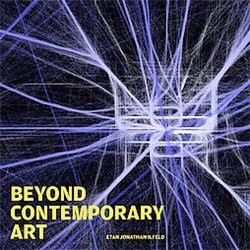 Vivays Publishing says: In this book, the author surveys the key concepts and ideas that have reverberated throughout the art world in the last decade through studying the artists who have created them. From blockbuster museum exhibitions to influential art fairs and art-stars, the ever-expanding contemporary art world has been increasingly integrated into popular culture. While highlighting established artists such as Gerhard Richter, the book also includes emerging and mid-career artists whose work ranges widely. Artists such as Jeremy Wood who plots his movement across the globe through GPS tracking, Tatsuo Miyajima who does digital light displays, Eduardo Kac who does transgenic bio-art or Santiago Sierra who paid workers to shift a heavy rock back and forth are among the international artists included in this book. Often controversial, these artists push the boundaries of what would traditionally be considered art.
Vivays Publishing says: In this book, the author surveys the key concepts and ideas that have reverberated throughout the art world in the last decade through studying the artists who have created them. From blockbuster museum exhibitions to influential art fairs and art-stars, the ever-expanding contemporary art world has been increasingly integrated into popular culture. While highlighting established artists such as Gerhard Richter, the book also includes emerging and mid-career artists whose work ranges widely. Artists such as Jeremy Wood who plots his movement across the globe through GPS tracking, Tatsuo Miyajima who does digital light displays, Eduardo Kac who does transgenic bio-art or Santiago Sierra who paid workers to shift a heavy rock back and forth are among the international artists included in this book. Often controversial, these artists push the boundaries of what would traditionally be considered art.
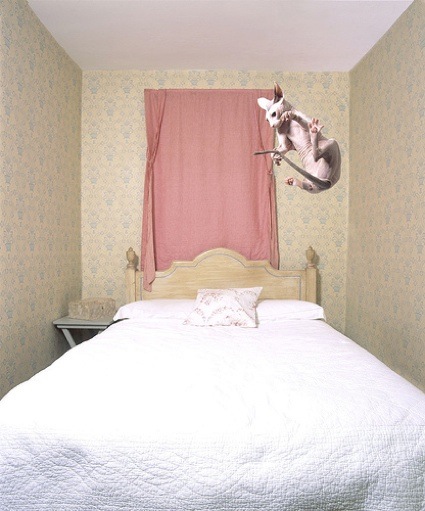 Richard Ansett, No Coat on Fatal Attraction #9, 2007
Richard Ansett, No Coat on Fatal Attraction #9, 2007
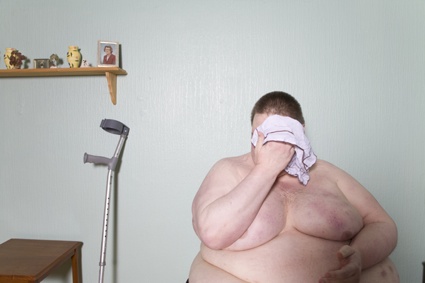 Richard Ansett, The Big Society, Man living with mother (deceased)
Richard Ansett, The Big Society, Man living with mother (deceased)
Beyond Contemporary Art is the first book i’ve read that not only recognizes that contemporary art is constantly reinventing itself (a fact that most books on the subject acknowledge) but that also exemplifies clearly the relentless flux and stretching width of the definition for contemporary art. The book shows painting and photography for galleries, sculpture and installation for museums but also street art, game art, information aesthetics, computer-based art, etc. It’s an eclectic book, a fact highlighted by the presentatin of the artists in alphabetical order. Anish Kapoor comes right before Eduardo Kac. Takashi Murakami directly follows M/M.
Beyond Contemporary Art is also a very subjective book. I can’t see how it is possible to be entirely objective when it comes to contemporary art but it does make you wonder what your own choices would have been. I know that if i had to write a book that focuses so strongly on emerging art, i wouldn’t have felt the need to add Damien Hirst, Antony Gormley and Anish Kapoor. Maybe i would have left Banksy aside too. I would have chosen more political works (the kind of work we define as ‘activism’ and ‘hacktivism’), i would have looked beyond the USA and Europe. But that’s just me being equally subjective. And that’s also just a detail because the author does a far better job at showing what is contemporary art today than any contemporary art fair does. Which brings us to Frieze, the fair is opening tomorrow in London and it’s going to be interesting to see how static or forward-looking Frieze is this year compared to the book (last year was decidedly on the stagnant side.)
Beyond Contemporary Art is a brilliant book. Only a couple of blogs would bombard you in such short succession with Aram Bartholl, Björk, Usman Haque, Burning Man, Ryoji Ikeda, INK Illustration.
However, i would advise the author to be better acquainted with geography. Ars Electronica doesn’t take place in Vienna, Stroom isn’t in Belgium.
A few examples of what you can find in the book. With or without comments:
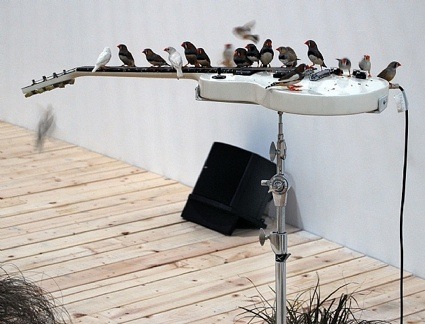 Céleste Boursier-Mougenot, From here to ear (detail), 2007
Céleste Boursier-Mougenot, From here to ear (detail), 2007
Céleste Boursier-Mougenot transformed the Curve (at the Barbican in London) into a walk-though aviary for zebra finches. The birds went about their daily life, flew around and perched on or fed from the electric guitars and other instruments and objects that the artist had installed in the space. By doing so, they composed an unexpected, live soundscape.
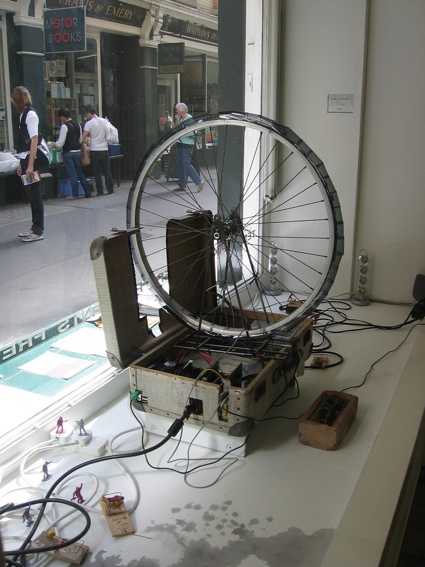 Jenny Pickett & Sunshine Frère, Wheel of Death. From the exhibition ‘If i Can’t Have You, No One Can’, 2008
Jenny Pickett & Sunshine Frère, Wheel of Death. From the exhibition ‘If i Can’t Have You, No One Can’, 2008
Jenny Pickett & Sunshine Frère offered gallery visitors the opportunity to purchase art works. If they couldn’t afford the object they coveted but they did not want anyone else to have it, they could pay to have it destroyed for a fraction of the price. The destroyed artworks was then presented in beautifully packaged remains and come complete with an authenticated DVD of the art(efact’s) destruction.
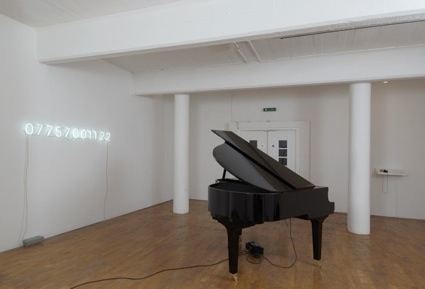 Katie Paterson, Earth-Moon-Earth (Moonlight Sonata Reflected from the Surface of the Moon), 2007
Katie Paterson, Earth-Moon-Earth (Moonlight Sonata Reflected from the Surface of the Moon), 2007
Earth-Moon-Earth involved the transmission of Beethoven’s Moonlight Sonata to the moon and back with the help of moon bouncers.
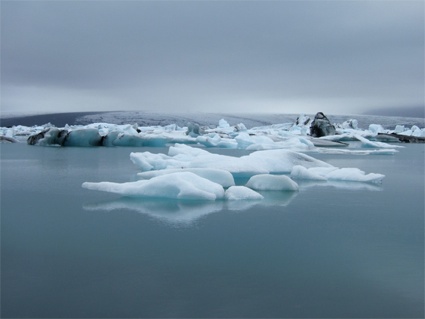 Katie Paterson, Vatnajökull (the sound of), 2007
Katie Paterson, Vatnajökull (the sound of), 2007
With Vatnajökull, Katie Paterson broadcast the sounds of a melting glacier live to a visitor on a mobile phone in an art gallery.
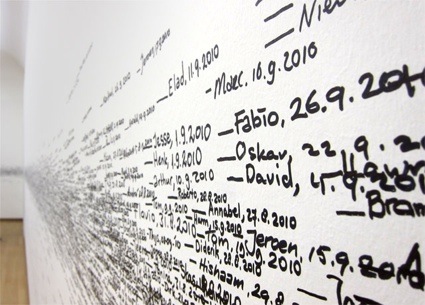
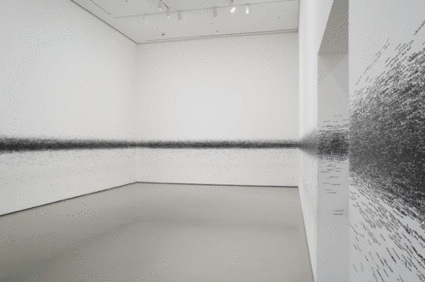 Roman Ondák, Measuring the Universe, 2007. © The Museum of Modern Art
Roman Ondák, Measuring the Universe, 2007. © The Museum of Modern Art
Over the course of Roman Ondák’s exhibition, museum attendants had to mark the visitors’ heights, first names, and date of the measurement on the gallery walls. Beginning as an empty white space, over time the gallery gradually accumulated the traces of thousands of people.
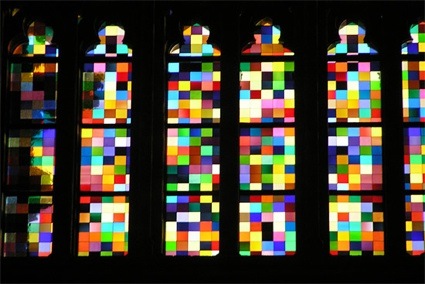 Gerhard Richter, Stained glass window in the Cologne Cathedral, 2007. Image © designboom
Gerhard Richter, Stained glass window in the Cologne Cathedral, 2007. Image © designboom
Gerhard Richter’sstained glass window in the Cologne Cathedral is a 113 square metres abstract collage of 11,500 pixel-like squares in 72 colors, randomly arranged by computer (with some symmetry), reminiscent of his 1974 painting “4096 colours”. Cardinal Joachim Meisner did not attend the window’s unveiling; he had preferred a figurative representation of 20th century Christian martyrs and said that Richter’s window would fit better in a mosque or prayer house.
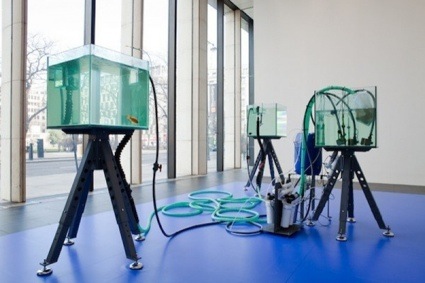 Miguel Palma, Air Print, 2012
Miguel Palma, Air Print, 2012
Inside a transformed container, a ventilation system sucks in air and dust particles, which are filtered onto a piece of fabric. The result is a constantly changing pointillist imprint of the pollution present in Liverpool’s air.
The fabric is replaced every two week and the print is then displayed in the exhibition space.
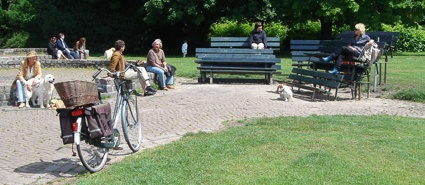 Jeremy Wood, Data Cloud, 2008
Jeremy Wood, Data Cloud, 2008
Data Cloud asks where we are in relation to where technology thinks we are. A GPS receiver was placed on 2 benches to record their position every ten seconds for one minute. The successive locations of the benches were mapped on a 3d chart of where the GPS infrastructure said they were. 12 new identical park benches were then assembled at 1:1 scale according to where the GPS positioned them, over, underneath, and nearby the two original benches.
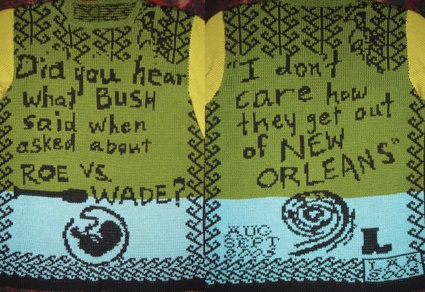 Lisa Anne Auerbach, Did You Hear What Bush Said When Asked about Roe vs. Wade?, 2005
Lisa Anne Auerbach, Did You Hear What Bush Said When Asked about Roe vs. Wade?, 2005
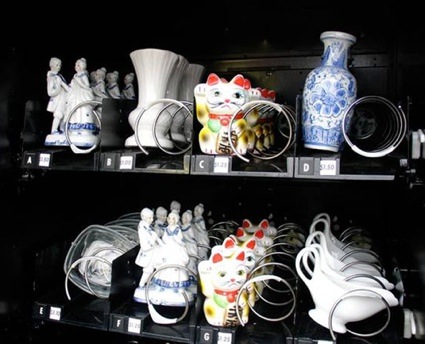 Yaris & Kublitz, Anger Release Machine, 2006-2008
Yaris & Kublitz, Anger Release Machine, 2006-2008
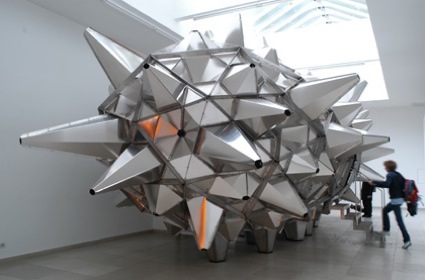 Olafur Eliasson, La situazione antispettiva (The Antispective Situation), 2003
Olafur Eliasson, La situazione antispettiva (The Antispective Situation), 2003
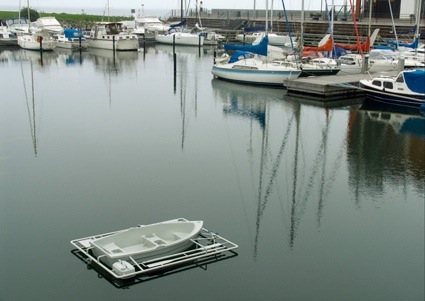
 Michael Johansson, Toys’R’Us, Dingy scale 1:1, 2006
Michael Johansson, Toys’R’Us, Dingy scale 1:1, 2006
Quick look inside the book.
Image on the homepage: Rona Yefman, Pippi Longstocking, The Strongest Girl in the World, 2006.
